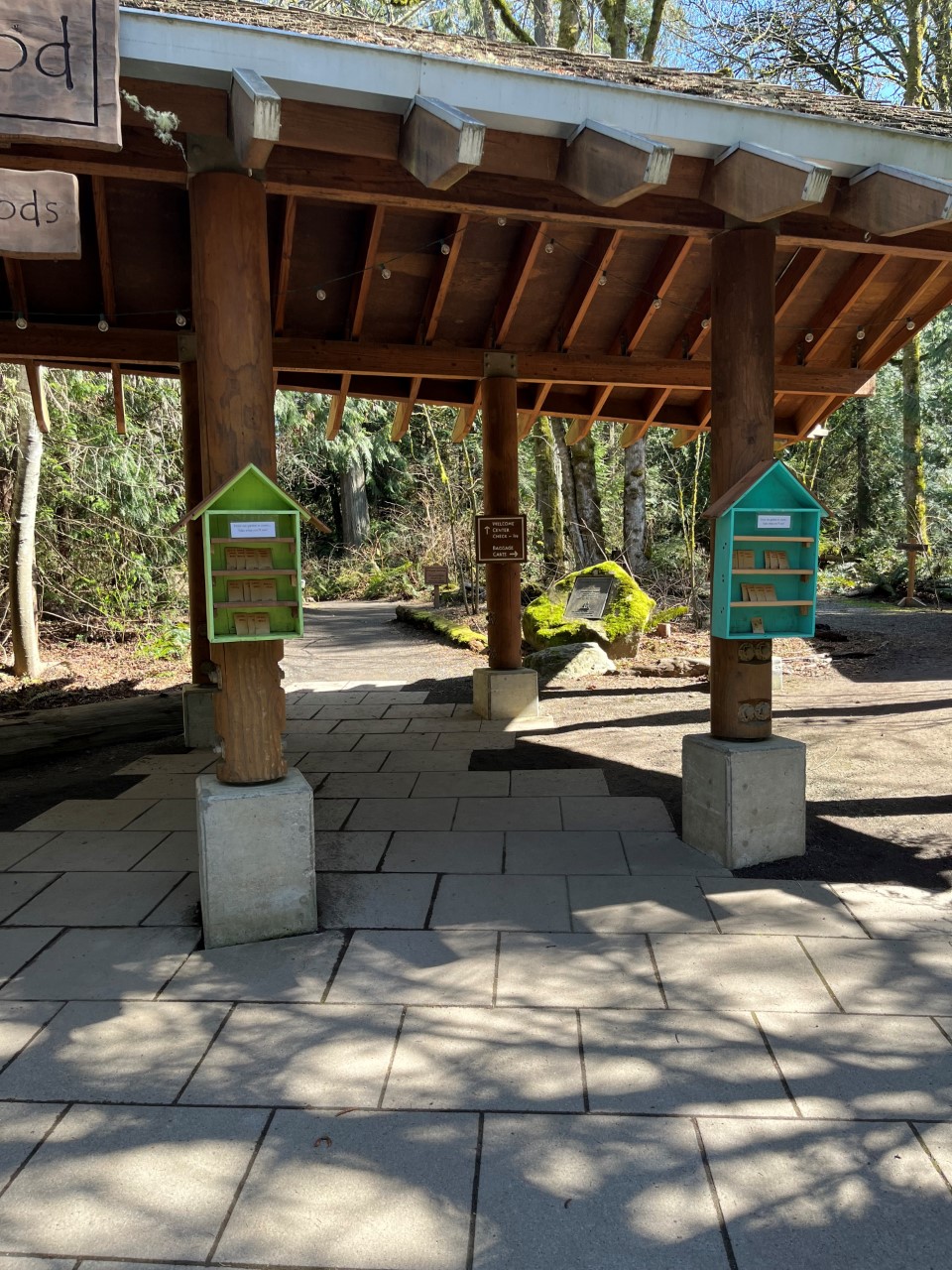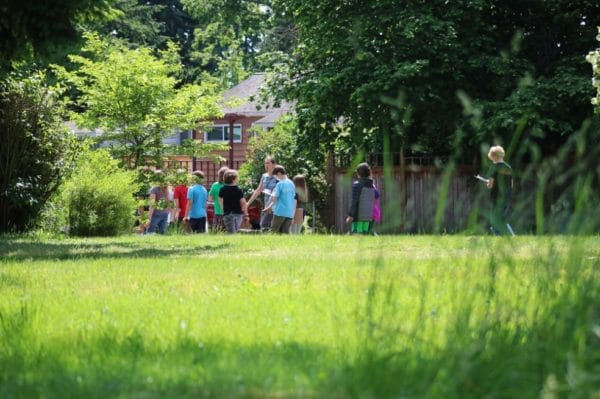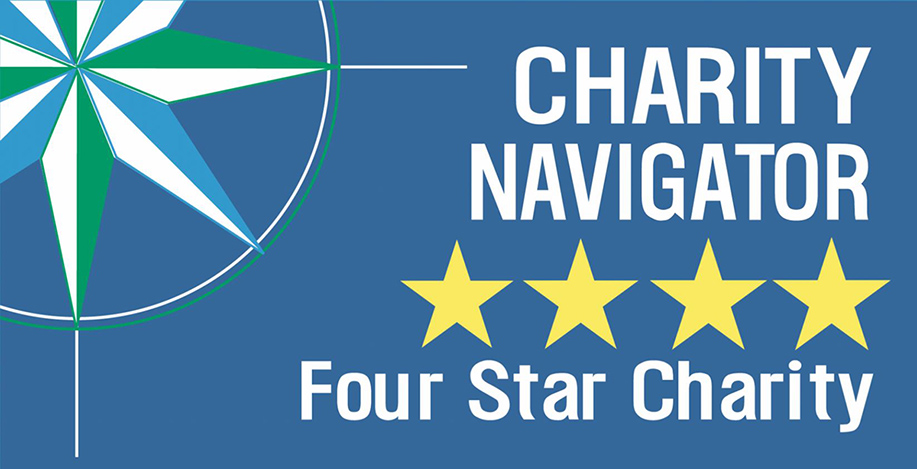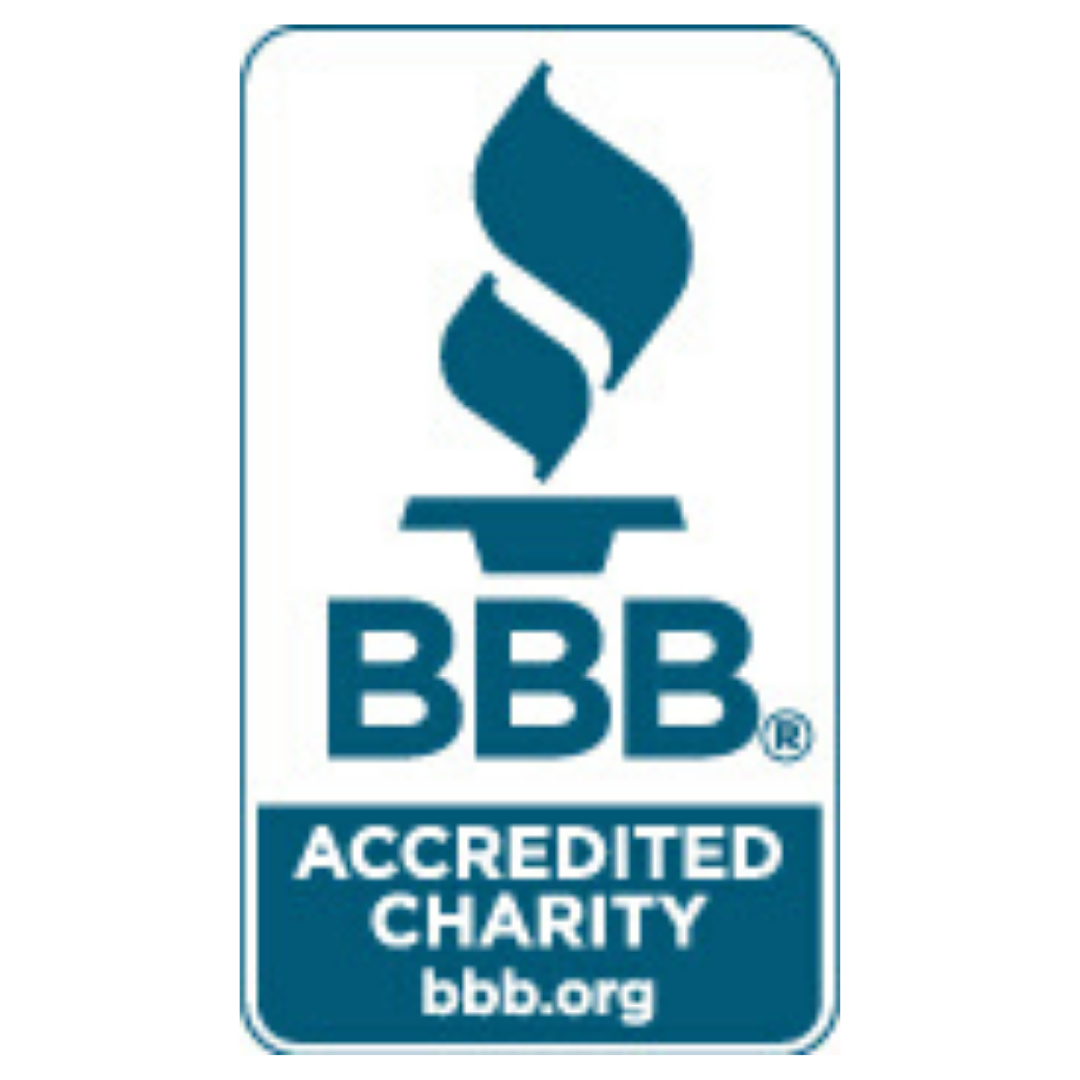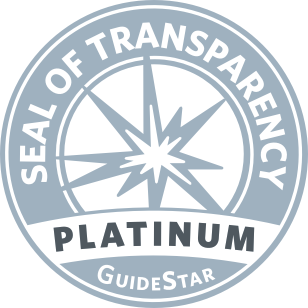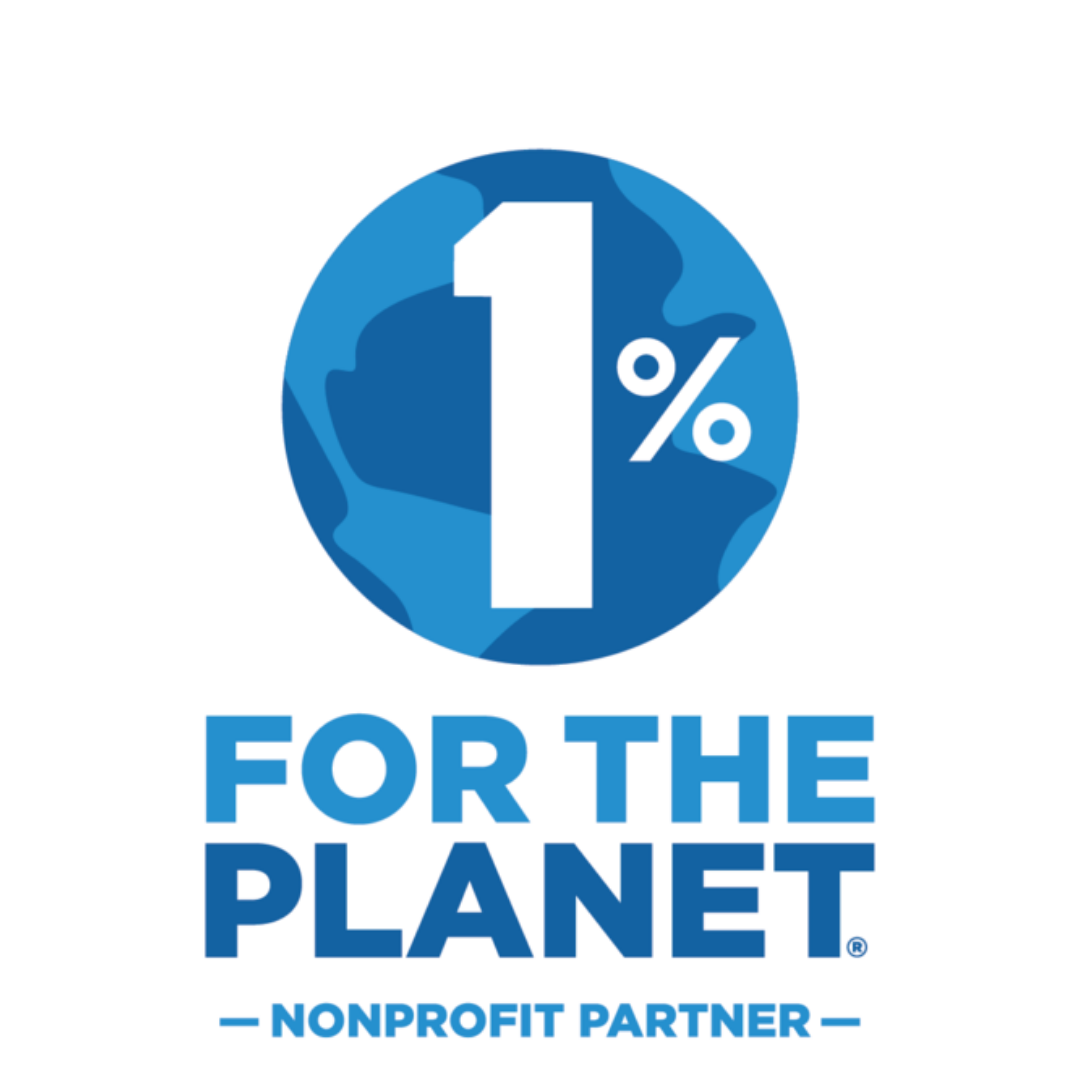The first time I heard that IslandWood was going to host a Community Engagement Forum…
Author: Mónica Mesquita
Not long ago, I was reminded by one of our School Overnight Program (SOP) students that “seeds are life just waiting to start.” Her words prompted me to think deeply and differently about one of our garden practices—seed saving.
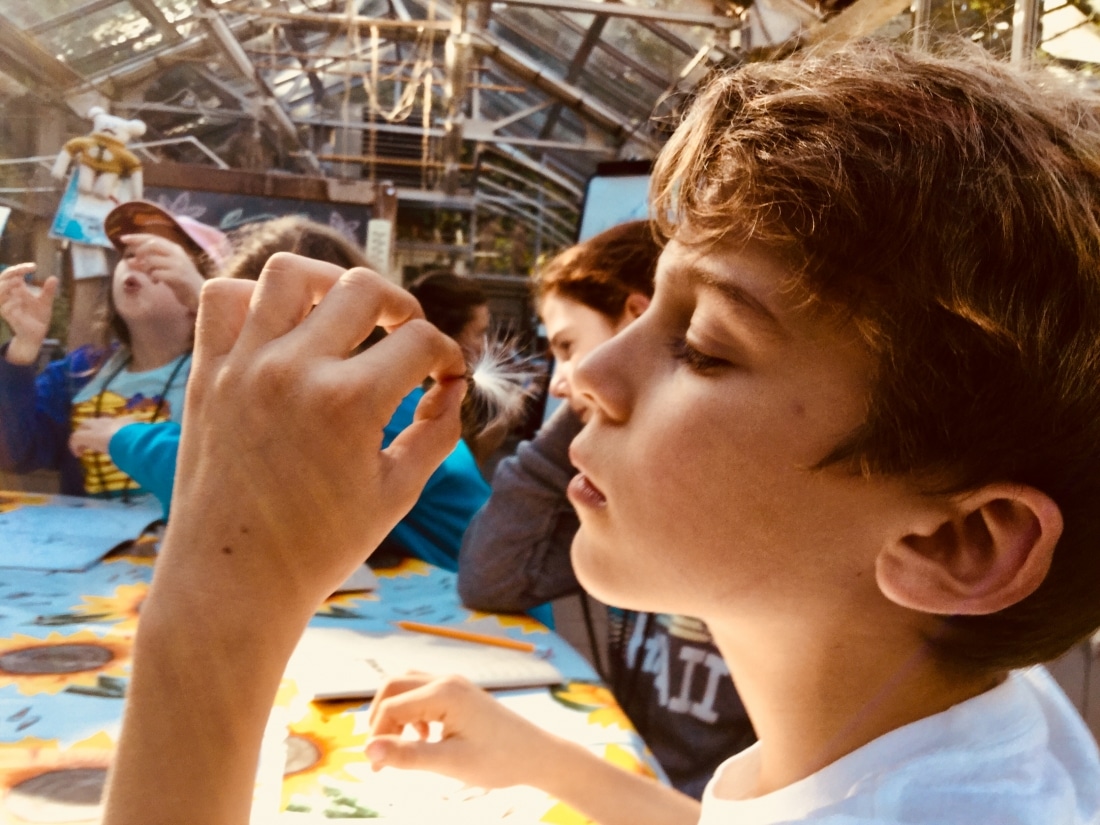
A School Overnight Program student examining a seed.
Seed saving is an ancient practice that involves collecting the seeds a plant produces as part of its life cycle. A simple version of this cycle goes something along the lines of seed, seedling, mature plant, flower, fruit and/or seed. Seeds can be saved to eat and/or plant. For instance, a garlic clove is a seed that we typically eat but could also plant.
It is important to note that humans were not the first seed savers. Our friends the squirrels have been seed saving for millions of years, storing them for food in sneaky underground places to eat during the winter. However, they often forget them entirely or leave one or two behind that might grow into new plants with more seeds to save.
Saving seeds has a multitude of positive impacts from building community and challenging a capitalist food system to preserving genetic diversity.
Engaging in the act of harvesting seeds together, of having hands busy and relating to the people around you, connects people to each other in the present, to those who passed down these seeds in the past, and to those who will plant these seeds in the future. It is a beautiful, multilayered connection through time.
Harvesting our own seeds means that we do not need to buy them when it comes time to plant again. Not only do we save money, we take charge of our own food choices—what we eat is not determined by what we can afford at the store.
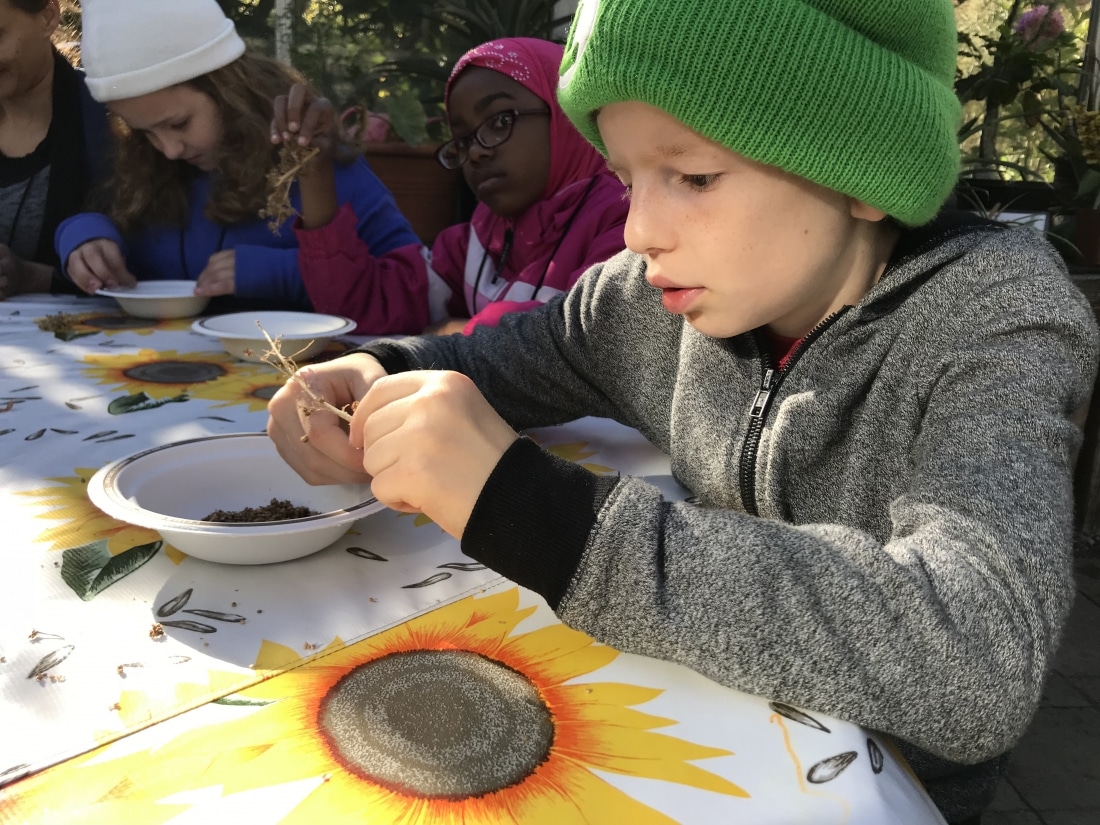
A School Overnight Program student separating seeds in the garden.
As we sow our own seeds instead of purchasing them, we are preserving the genetic diversity of plants. Much like humans, every seed from its parent plant shares a lot of its genetic material but not all, thus adding to seed genetic diversity. This practice also ensures that plants are more resilient in the face of challenge from disease—strength lies in diversity. The more humans have leaned on seed purchasing, however, the less diverse our seeds have become, because it is most profitable to grow lots of the same seeds that sell well and because many industrial seeds are genetically modified to remain exactly the same.
The positive impact of seed saving came to life during a quinoa harvesting lesson led by one of our graduate students this week as part of the Soil to Snack program. As a little community, their hands busy removing the husks from the quinoa seeds, the students discussed the central role of quinoa in Incan culture and the effect of colonization on the Incan people and their diet. These young people were stewards of the earth as they ensured the diversity of our quinoa crop and provided quinoa for future students to cook and eat.



